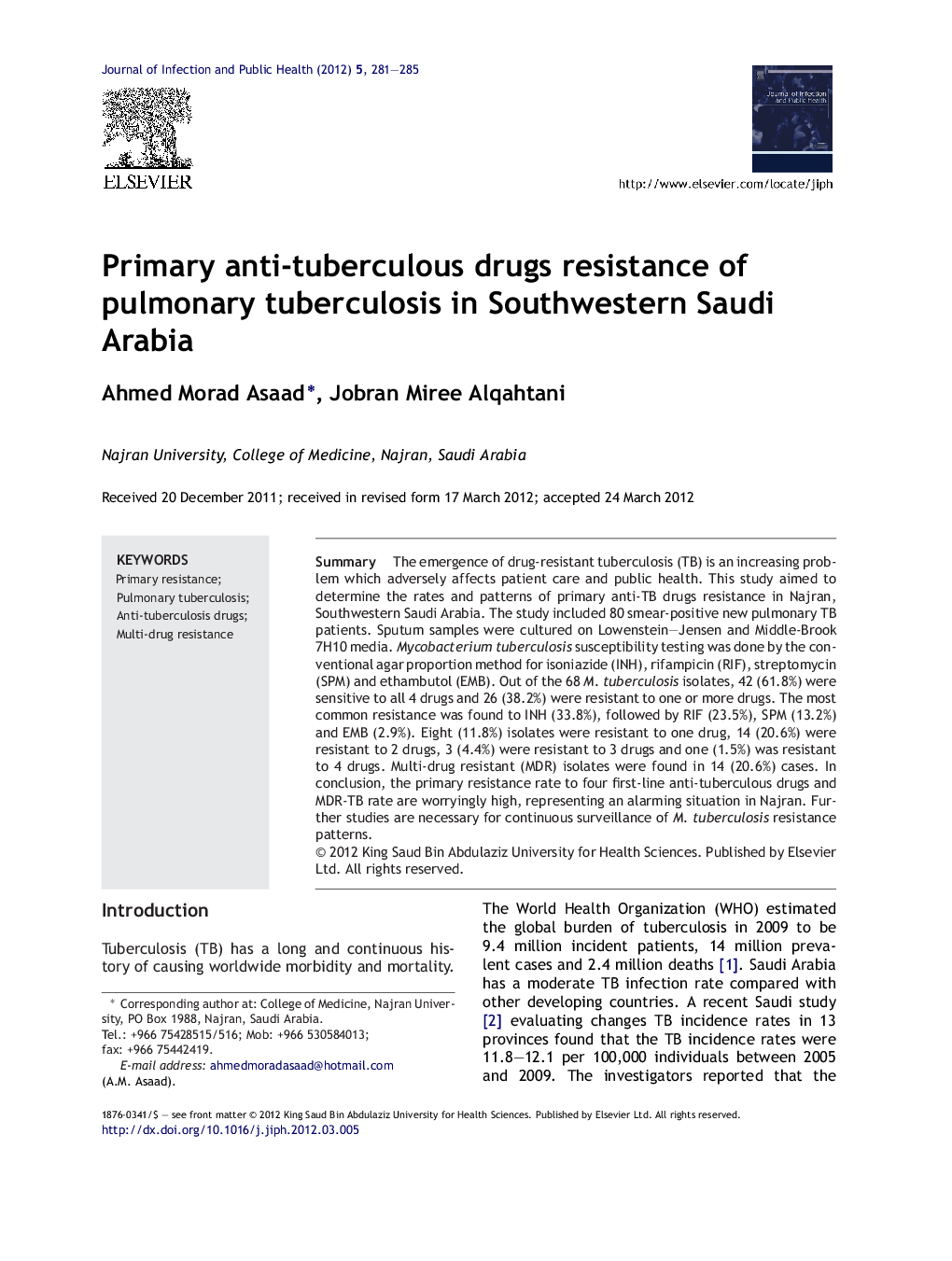| Article ID | Journal | Published Year | Pages | File Type |
|---|---|---|---|---|
| 3406110 | Journal of Infection and Public Health | 2012 | 5 Pages |
SummaryThe emergence of drug-resistant tuberculosis (TB) is an increasing problem which adversely affects patient care and public health. This study aimed to determine the rates and patterns of primary anti-TB drugs resistance in Najran, Southwestern Saudi Arabia. The study included 80 smear-positive new pulmonary TB patients. Sputum samples were cultured on Lowenstein–Jensen and Middle-Brook 7H10 media. Mycobacterium tuberculosis susceptibility testing was done by the conventional agar proportion method for isoniazide (INH), rifampicin (RIF), streptomycin (SPM) and ethambutol (EMB). Out of the 68 M. tuberculosis isolates, 42 (61.8%) were sensitive to all 4 drugs and 26 (38.2%) were resistant to one or more drugs. The most common resistance was found to INH (33.8%), followed by RIF (23.5%), SPM (13.2%) and EMB (2.9%). Eight (11.8%) isolates were resistant to one drug, 14 (20.6%) were resistant to 2 drugs, 3 (4.4%) were resistant to 3 drugs and one (1.5%) was resistant to 4 drugs. Multi-drug resistant (MDR) isolates were found in 14 (20.6%) cases. In conclusion, the primary resistance rate to four first-line anti-tuberculous drugs and MDR-TB rate are worryingly high, representing an alarming situation in Najran. Further studies are necessary for continuous surveillance of M. tuberculosis resistance patterns.
► Primary anti-tuberculous drugs resistance rate of 38.2% representing a highly alarming situation in Najran. ► The resistances to isoniazide and rifampicin were the most common accounting for 5.9% and 2.9% respectively. ► The rate of multidrug-resistant tuberculosis is worryingly high and should be taken seriously in deciding treatment protocols in Najran.
